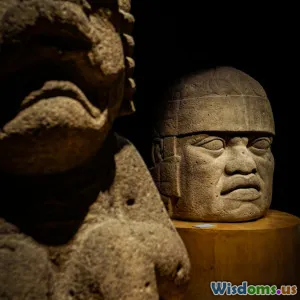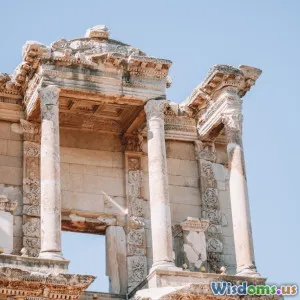
What the DNA of Mummies Reveals About Early Human Migration
8 min read Explore how mummy DNA uncovers secrets of early human migration and reshapes our understanding of ancient civilizations. (0 Reviews)
What the DNA of Mummies Reveals About Early Human Migration
Introduction
For centuries, mummies have fascinated researchers and the public alike, serving as time capsules from ancient civilizations that have long since faded. Traditionally, mummies—especially Egyptian ones—have offered glimpses into burial customs, religious beliefs, and social hierarchies. However, the advent of advanced genetic analysis has unlocked an exciting new frontier: decoding the DNA nestled within these preserved remains. This genetic information is revolutionizing our understanding of early human migration, tracing pathways humans took tens of thousands of years ago and revealing unexpected cultural interactions. What hides beneath those layers of bandages is not just history but a living story of human origins, movement, and adaptation.
Unlocking Genetic Secrets from the Past
Advances in Ancient DNA Sequencing
Extracting DNA from mummies has long been challenging due to degradation over millennia. Until recently, contamination and fragmentation confined genetic research mostly to mitochondrial DNA (mtDNA), which, while insightful, offered limited resolution. The next-generation sequencing (NGS) technologies—paired with more stringent anti-contamination protocols—have dramatically improved data retrieval.
For example, a groundbreaking 2017 study published in Nature Communications utilized whole genome sequencing on over 90 ancient Egyptian mummies dating between 1400 BCE and 400 CE. Despite expectations of mostly Near Eastern ancestry, genetic results showed significant sub-Saharan African influence alongside Mediterranean lineages, illustrating a complex admixture rather than a single homogeneous population.
Mummy DNA as a Window into Migration Patterns
One key revelation from mummy DNA is how it verifies and refines hypotheses derived from archaeology and linguistics. Genetic signatures trace ancestral links spanning continents—reflecting human journeys that sculpted early civilizations. Through genomic comparisons, we now see early migration routes were more intricate and interconnected than once thought.
For instance, DNA extracted from South American mummies in Peru unearthed clues about both South Asian and Polynesian genetic markers. This supports theories that pre-Columbian transoceanic contacts may have occurred, altering previous assumptions of total isolation in the Americas before European arrival.
Decoding Human Movement Through Different Regions
Egypt: Crossroads of Cultures
Ancient Egypt was often seen as genetically isolated due to its iconic, unique culture. Yet, mummy DNA tells a more cosmopolitan tale.
- Egypt and Sub-Saharan Africa: Findings reveal a consistent presence of sub-Saharan African ancestry, predating later historical trade and migration waves, influencing language and customs.
- Mediterranean Interactions: Genetic affinities with Levant, Europe, and the Near East indicate extensive interaction via trade routes like the Nile and the Mediterranean Sea.
The fluid genetic mosaic suggests Egypt was a hub where diverse populations met, traded, and merged.
The Americas: Surprising Genetic Links
Mummified remains in coastal Peru have been pivotal in understanding the peopling of South America.
- Polynesian Connection: In 2014, researchers discovered Southeast Asian and Polynesian genetic signatures in Peruvian mummies dating back to 1000 CE—centuries before Columbus.
- Interpretation: This introduces the possibility of limited prehistoric trans-Pacific voyages, proving ancient seafarers pioneered journeys once deemed too daring or impossible.
Such data challenge the conventional narrative of human movement exclusively via the Bering land bridge and underline the complexity of ancient global interactions.
Eurasia: Tracing Steppe Migrations
Mummies from the Eurasian steppes provide evidence supporting massive movement waves of nomadic tribes that shaped modern Europe and Asia’s gene pool.
- The Bronze Age Sintashta culture mummies show genetic signatures linked to Indo-Iranian language dispersals.
- These migrations likely brought new technologies, languages, and social structures.
These genetic trails corroborate archaeological findings—burial artifacts, horse domestication evidence—painting a rich picture of Eurasian prehistoric cultural shifts.
Implications for Archaeological Mysteries and Cultural Understanding
Resolving Disputed Origins
DNA analysis answers long-debated origin questions. Take the debate around the Sea Peoples, enigmatic invaders who appear in Egyptian records around 1200 BCE. Recent genetic studies suggest they likely originated from a mix of Mediterranean coastal populations rather than a single homogenous tribe, thereby clarifying their cultural heterogeneity.
Re-mapping Early Civilization Connections
Mummy genomics aids in understanding the spread of agricultural practices and technologies across ancient societies. For example, the Zambian’s ancient genome shows early plant cultivation transfer routes across Africa, dispelling views of isolated development.
Human Adaptations and Health Insights
Furthermore, DNA retrieved from mummies also informs about past diseases, dietary changes, and adaptation mechanisms. Ancient pathogen DNA extracted from Egyptian mummies confirmed historical evidence of malaria presence, providing insight into how diseases shaped early population dynamics.
Conclusion
The DNA harvested from centuries-old mummies is more than a scientific marvel—it is a storytelling thread reconnecting fragmented chapters of human history. From revealing complex, multidirectional migrations across continents to reshaping narratives about ancient civilizations' interactions, mummy DNA transforms mysteries into known legacies. As technology advances, every ancient genome sequenced becomes a crucial piece in the global puzzle of human origin and movement.
For those fascinated by the interwoven tapestry of history, archaeology, and genetics, the study of mummy DNA beckons continued exploration. It not only deepens our appreciation of humanity’s shared past but also invites reflection on how migration and cultural fusion have shaped the world today—informing scholars, inspiring storytellers, and empowering us all to honor the diverse roots from which we arise.
References
- Schuenemann, V. J., et al. (2017). Ancient Egyptian mummy genomes suggest an increase of Sub-Saharan African ancestry in post-Roman periods. Nature Communications, 8:15694.
- Reich, D., et al. (2014). Genetic evidence for prehistoric trans-Pacific contact. Current Biology, 24(4), 409–416.
- Allentoft, M., et al. (2015). Population genomics of Bronze Age Eurasia. Nature, 522(7555), 167–172.
By combining genetics with archaeology, researchers unlock human history, revealing migration routes and cultural exchanges once lost to time.
Rate the Post
User Reviews
Popular Posts





















